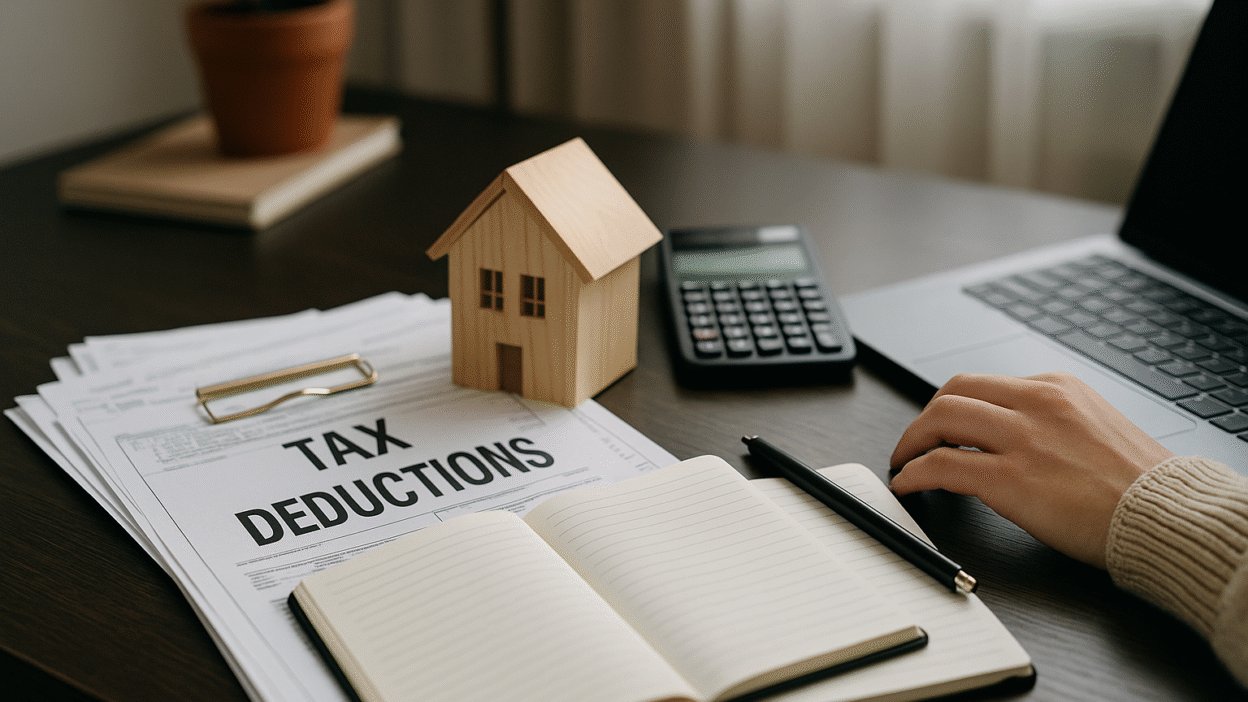Are You Missing Out on Thousands in Tax Deductions?
Running a business from home comes with flexibility and freedom—but are you fully taking advantage of the tax deductions for home-based small businesses? According to the IRS, over 60% of home-based entrepreneurs miss legitimate write-offs simply because they don’t know they qualify. That means you’re likely leaving money on the table every single year.
Whether you’re a freelancer, consultant, or side hustler, understanding what the tax code allows is your first step to saving more. In this article, we’ll break down the top deductions, practical tools, and legal strategies to reduce your taxable income—without red flags or risky moves.
Essential Financial Toolkit for Home-Based Business Owners
To maximize your deductions, you need the right systems in place. Here’s what to add to your toolkit:
- Accounting Software: Track income and expenses with tools like QuickBooks, Xero, or Wave.
- Digital Receipt Organizer: Store and categorize receipts using Expensify, Shoeboxed, or Google Drive folders.
- Mileage & Time Tracker: Apps like MileIQ or Toggl can automate deductions for driving and billable hours.
- Separate Business Account: This avoids commingling funds and simplifies audit-proof documentation.
- Tax Calendar: Use IRS reminders or your Google Calendar to stay on top of quarterly payments and filing deadlines.
💡 Tip: If you’re not a fan of spreadsheets, try automated platforms that sync with your bank and categorize expenses in real time.
Time Commitment: How Much Work Is This Really?
Great news: claiming tax deductions for home-based small businesses doesn’t have to be time-consuming.
- Initial Setup: ~90 minutes to set up software and categorize accounts
- Monthly Review: 30–60 minutes to upload receipts and categorize expenses
- Quarterly Filing: 1–2 hours for estimated taxes (or less with automation)
- Year-End Prep: 2–3 hours for reports, depreciation tracking, and adjustments
⏳ Use a digital dashboard or calendar alerts to stay consistent without spending hours every week.
Step-by-Step: Claiming Tax Deductions for Your Home Business
Step 1: Determine Your Business Space
Use the home office deduction if part of your home is used regularly and exclusively for business. You can use:
- Simplified method: $5 per square foot (up to 300 sq. ft.)
- Actual expense method: A percentage of your rent/mortgage, utilities, insurance, and repairs
Step 2: Deduct Business Utilities & Services
Claim portions of:
- Electricity, water, and gas
- Internet and phone service
- Business-specific subscriptions (Zoom, Adobe Suite, etc.)
📶 Pro Tip: Deduct only the portion related to business use (e.g., 70% of your internet bill).
Step 3: Track and Deduct Equipment & Supplies
Include:
- Desks, chairs, computers (depreciated over time if over $2,500)
- Stationery, software, business apps
- Printer ink, shipping materials, office decor
Step 4: Deduct Mileage and Vehicle Expenses
Use the standard mileage rate (67 cents/mile in 2024) or actual expenses (fuel, insurance, maintenance). Must keep a detailed log.
Step 5: Claim Marketing, Training, and Insurance
- Business insurance (liability or professional)
- Online ads, logo design, website hosting
- Education related to your trade or industry
Step 6: Consider Retirement and Health Deductions
- SEP IRA, Solo 401(k) contributions
- Self-employed health insurance premiums
These reduce taxable income significantly.
Key Financial Metrics You Should Know
- Home Office Deduction (Simplified): Up to $1,500/year
- Business Mileage Deduction (2024): $0.67/mile
- Office Equipment Section 179 Deduction Limit: $1,160,000
- Self-Employment Tax Rate: 15.3%
- SEP IRA Contribution Limit (2025): Up to $69,000
📊 The average small business owner saves $4,800/year by claiming all eligible deductions.
Smarter Alternatives You May Not Know
- Hire Your Children: Pay your kids a legitimate wage (e.g., for packaging, digital editing), and deduct it as a business expense.
- Use the Augusta Rule: Rent your home to your business for up to 14 days/year and deduct the rent—tax-free.
- Start an S-Corp: If net income exceeds $60,000, converting your sole proprietorship to an S-Corp can reduce self-employment taxes.
Application Scenarios
Example 1: Jenna the Etsy Shop Owner
Jenna uses her spare room to design and ship handmade candles. She deducts rent (12%), utilities, packaging supplies, and Etsy fees. Total savings: ~$3,400/year.
Example 2: Marcus the Freelance Web Developer
Marcus claims a home office, deducts his Adobe Creative Cloud, internet bill, and mileage to client sites. He also contributes to a Solo 401(k). Total savings: ~$6,200/year.
Common Mistakes to Avoid
- ❌ Using a room that’s not exclusively for business
- ❌ Forgetting to prorate shared bills like internet and phone
- ❌ Not keeping detailed mileage logs
- ❌ Ignoring depreciation for laptops and large purchases
- ❌ Failing to file quarterly taxes on time
🔎 Pro Tip: Keep all digital and physical records for 3–7 years in case of an audit.
Maintenance & Optimization Tips
- 📅 Monthly Check-ins: Set time to categorize expenses and upload receipts
- ⚙️ Automate recurring bills, payments, and reports through software like QuickBooks or Wave
- 🧮 Review Tax Law Changes Annually: Especially after election years or IRS updates
- 📤 Consult a Tax Pro: Especially if you earned over $50K or made major equipment purchases
Conclusion: Small Deductions, Big Impact
Running a home-based business means you’re eligible for more tax breaks than you think. By understanding the tax deductions for home-based small businesses, you can turn ordinary expenses into legitimate savings—without breaking the rules.
With the right tools, a clear process, and a bit of proactive effort, you’ll be ahead of 90% of solopreneurs and freelancers.
👉 Ready to claim what’s yours? Subscribe to YourFinanceWorld.com for more free tools, tax guides, and personalized financial strategies.
FAQs: Tax Deductions for Home-Based Small Businesses
1. Do I need an LLC to claim home business deductions?
No. Sole proprietors can claim deductions as long as they report income via Schedule C.
2. What’s the biggest deduction for a home business?
Usually the home office deduction, followed by mileage and equipment depreciation.
3. Can I deduct my full internet bill?
No. Only the percentage used exclusively for business. Estimate usage or track with an app.
4. Can I still deduct expenses if I rent my home?
Yes. Rent, utilities, and renter’s insurance are all partially deductible based on business-use percentage.
5. What if I use my kitchen table as a desk?
Unfortunately, it’s not exclusive use—so it doesn’t qualify for the home office deduction.
6. Is it too late to claim deductions if I didn’t track during the year?
You may still claim expenses if you have bank statements or digital records, but accurate tracking is ideal.




